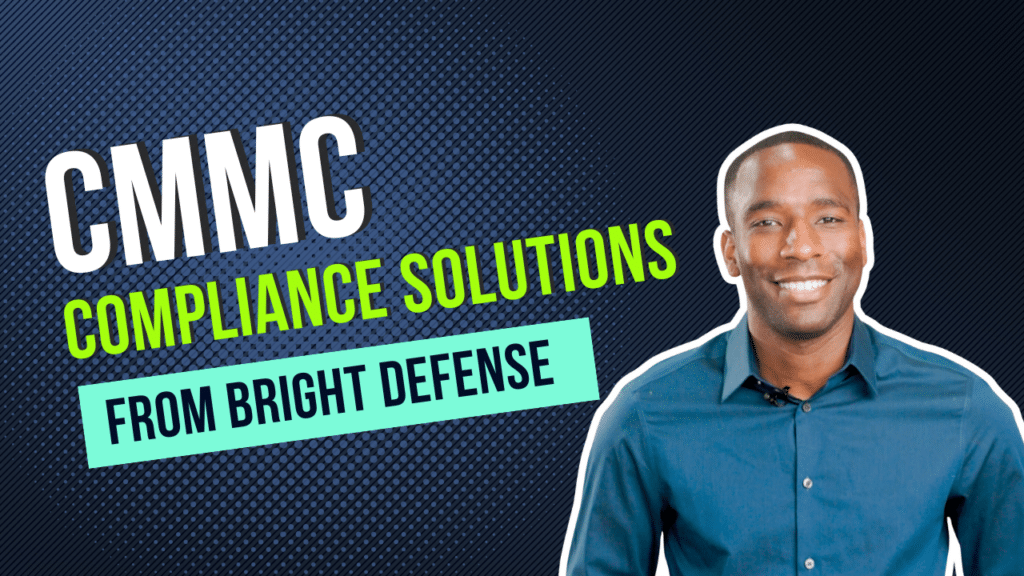
John Minnix
February 26, 2025
Audit Readiness: Your Guide to the Perfect Compliance Audit
Introduction
Bright Defense delivers continuous compliance solutions. Customers frequently ask us what internal controls and business processes they can implement to improve their audit readiness. This guide outlines the process of preparing for a cybersecurity compliance audit. We will detail common frameworks, review our audit readiness checklist, and discuss the advantages of continuous compliance.
If you have questions or are interested in learning more, please get in touch with Bright Defense for a complimentary audit readiness assessment. Let’s get started!

Understanding Cybersecurity Compliance Audits
The Purpose of Compliance Audits
Cybersecurity compliance audits verify whether an organization’s information security policies, business processes, and internal controls meet specific regulatory standards and industry best practices. Audits are essential for identifying vulnerabilities, mitigating risks, and protecting sensitive information against unauthorized access and data breaches.
Becoming audit-ready helps develop strong internal controls. It allows you to identify problems early, and take corrective actions against material weaknesses in you information security program. External audits are also a powerful trust signal for customers and investors. In fact, 41% of companies report that their lack of compliance slows down sales cycles.
Common Cybersecurity Frameworks and Standards
Compliance audits often revolve around established frameworks and standards, each tailored to address specific aspects of cybersecurity and data protection. Among the most widely recognized are:
- SOC 2: Designed for service providers storing customer data in the cloud, focusing on security, availability, processing integrity, confidentiality, and privacy. A CPA firm will conduct a SOC 2 audit.
- ISO 27001: An international standard that outlines the requirements for an information security management system (ISMS), applicable across various industries.
- HIPAA: The Health Insurance Portability and Accountability Act sets the standard for protecting sensitive patient data, essential for healthcare entities.
- NIST Frameworks: Developed by the National Institute of Standards and Technology, offering comprehensive guidelines and practices for improving cybersecurity.
The framework that best suits your business is dependent on your industry and your organizational goals. An audit readiness assessment from Bright Defense will help you develop and game plan to understand which framework best suits your organization.
Audit Readiness Checklist
Embarking on the journey towards audit readiness involves meticulous planning and a strategic approach to meet regulatory standards. This Audit Readiness Checklist is designed to focus your efforts to prepare to align your internal team. It outlines the audit readiness process and outlines key controls that must be in place before the auditor arrives.
A. Conduct a Gap Analysis
The gap analysis is the cornerstone of audit readiness. It offers a comprehensive overview of where your business currently stands in relation to the required compliance standards. It is the first step in identifying the specific areas that need attention and improvement to meet regulatory expectations.
The gap analysis can be conducted by your internal audit team, or by third party experts like the team at Bright Defense. Key steps include:
- Inventory of Assets and Data: Begin by cataloging all organizational assets and data, understanding where sensitive information is stored, processed, and transmitted.
- Assessment Against Framework Requirements: Map out the requirements of the relevant compliance frameworks against current practices to identify gaps.
- Risk Assessment: Conduct a comprehensive risk assessment to prioritize gaps based on the potential impact and likelihood of security threats.
B. Policy and Procedure Development
Developing robust policies and procedures is essential for establishing a clear framework within which the company operates to ensure compliance and security. This supporting documentation serves as the foundation for the organization’s cybersecurity posture and guide employee actions.
- Drafting Comprehensive Policies: Develop clear, comprehensive policies that reflect the organization’s commitment to security and compliance.
- Procedure Manuals: Create detailed procedure manuals for implementing the policies. These policies should be reviewed and accepted by all employees, with a clear audit trail showing acceptance.
- Regular Updates and Reviews: Establish a schedule for regularly reviewing and updating policies and procedures.
C. Implementing Security Controls
Implementing security controls is about putting the policies and procedures into action through physical, technical, and administrative measures. These controls are critical for protecting against threats and demonstrating compliance during audits.
- Physical Controls: Enhance physical security measures to protect against unauthorized access to facilities.
- Technical Controls: Deploy technical controls such as firewalls, encryption, and antivirus software.
- Administrative Controls: Implement administrative controls, including access management policies and regular security audits.

D. Employee Training and Awareness
Employee training and awareness programs are key to ensuring that all staff members understand their role in maintaining security and compliance. A well-informed workforce is one of the best defenses against cybersecurity threats.
- Comprehensive Training Programs: Develop ongoing training programs covering key compliance and security topics. Third-party security awareness training platforms, like KnowBe4, are great alternatives to implementing in house programs.
- Simulated Security Incidents: Conduct simulated phishing exercises and other security incident simulations.
- Feedback and Continuous Improvement: Encourage feedback from employees on the training programs.
E. Documentation and Evidence Gathering
Proper documentation and evidence gathering are crucial for demonstrating compliance efforts during an audit. This involves maintaining detailed records of all compliance-related activities, policies, and security measures.
- Document Control Processes: Establish processes for creating, storing, and managing security and compliance documentation.
- Evidence Collection: Systematically collect evidence of compliance, such as logs, reports, and records.
- Audit Trail Maintenance: Maintain a clear and comprehensive audit trail for all compliance-related activities.
F. Continuous Monitoring and Improvement
Continuous monitoring and improvement ensure that the organization’s compliance and security posture evolve in response to new threats and changes in regulations. This proactive approach is vital for maintaining long-term audit readiness.
- Implement Monitoring Tools: Use SIEM systems and other monitoring tools to oversee the organization’s security posture continuously.
- Regular Security Assessments: Schedule regular internal and external security assessments.
- Feedback Loops: Create mechanisms for collecting and analyzing feedback from audits and security incidents.
By methodically addressing each of these areas, companies can build a solid foundation for audit readiness, ensuring compliance with current standards and a strong resilience against future cybersecurity challenges.

Continuous Compliance: Elevating Audit Readiness Through Automation
Continuous compliance moves beyond the traditional, periodic audit preparation process to a dynamic, ongoing strategy that integrates compliance into every aspect of an organization’s operations. This proactive approach ensures that a company is always audit-ready, not just when an audit is imminent.
Continuous compliance leverages automation technologies to streamline and enforce compliance processes, making it easier for organizations to stay ahead of regulatory changes and emerging cybersecurity threats. By adopting continuous compliance, companies can turn the challenge of compliance into a strategic advantage.
Advantages of Continuous Compliance
- Enhanced Security Posture: Continuous compliance means constant vigilance. By regularly monitoring and updating security measures, organizations can quickly adapt to new threats, reducing the risk of breaches and enhancing overall security.
- Reduced Compliance Costs: Automation of compliance tasks decreases the need for manual labor, cutting down on the costs associated with compliance management. It allows organizations to allocate resources more efficiently, focusing on growth and innovation.
- Streamlined Audit Preparation: With compliance processes integrated into daily operations and automated evidence collection, companies can significantly reduce the time and effort required for audit preparation. This not only eases the audit process but also minimizes disruptions to business operations.
- Improved Compliance Accuracy: Automation reduces the risk of human error in compliance tasks, leading to more accurate and reliable compliance processes. This accuracy is critical for meeting regulatory standards and avoiding penalties.
- Increased Agility: Continuous compliance enables companies to respond more swiftly to regulatory changes. Automation tools can be quickly updated to reflect new compliance requirements, ensuring the company remains in compliance without costly delays.
- Strengthened Stakeholder Trust: A commitment to continuous compliance demonstrates to customers, investors, and partners that the company prioritizes data protection and regulatory adherence. This can enhance reputation and build trust.

Bright Defense: Your Pathway to Enhanced Audit Readiness
If you are ready to begin your compliance journey, Bright Defense can help. Our monthly engagement model delivers a robust cybersecurity program designed to meet compliance frameworks including SOC 2, ISO 27001, NIST, HIPAA and CMMC. We combine our expertise with compliance automation to increase audit readiness and ensure a smooth audit.
In addition to continuous compliance, we offer vCISO services, security assessments, vulnerability management, and managed security awareness training. This makes Bright Defense the optimal partner for your entire compliance journey.
Contact Bright Defense to get started today!

FAQ Section for “Audit Readiness: The Ultimate Guide”
What is audit readiness?
Audit readiness refers to an organization’s state of being fully prepared for a compliance audit, ensuring that all its business processes, controls, and documentation meet the required standards and best practices. It involves a proactive approach to align all aspects of the organization with the audit’s objectives.
How do I conduct an audit readiness assessment?
An audit readiness assessment is a comprehensive review of your organization’s current practices against the audit objectives and requirements. This involves evaluating key processes, internal controls, and supporting documentation to identify gaps and areas for improvement. Focus on aligning your information security policy and business processes with the expected standards.
How can we ensure the audit team and stakeholders are on the same page?
Communication is key. Regular meetings, updates, and shared resources help ensure everyone understands the audit objectives, timelines, and roles. Providing clear and concise documentation of key processes and controls can also aid in keeping the audit team and stakeholders aligned.
What role does risk management play in audit readiness?
Risk management is a critical component of audit readiness. By identifying, assessing, and managing risks associated with your business processes and information security, you can prioritize areas that need attention and ensure that your organization is focusing on the right aspects to mitigate potential audit findings.
What kind of supporting documentation should we prepare?
Prepare documents that clearly outline your internal controls, policies, and procedures. This includes your information security policy, process flowcharts, control descriptions, and evidence of controls in action (e.g., logs, reports). Make sure to review and update these documents regularly to reflect current practices.
What is the difference between an internal and external audit?
The main difference between internal and external audits lies in their purpose and who conducts them. Internal auditors are employees of the organization, focusing on evaluating the efficiency of risk management, control, and governance processes, including accounting processes. Their goal is to identify improvements across various areas to help the organization meet its objectives. External auditors, on the other hand, are independent professionals from accounting firms, tasked with verifying the accuracy of financial statements and ensuring compliance with legal standards. While internal audits aim to enhance internal operations and controls, external audits provide stakeholders with assurance about the organization’s financial integrity.
Get In Touch



